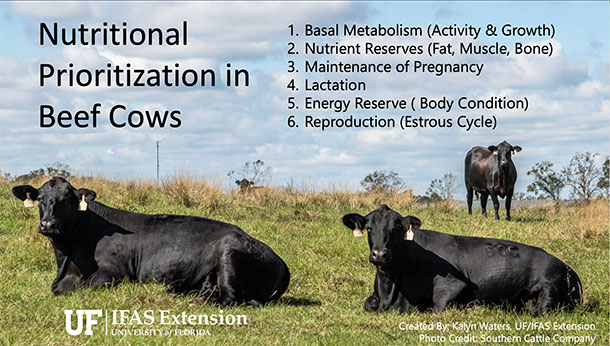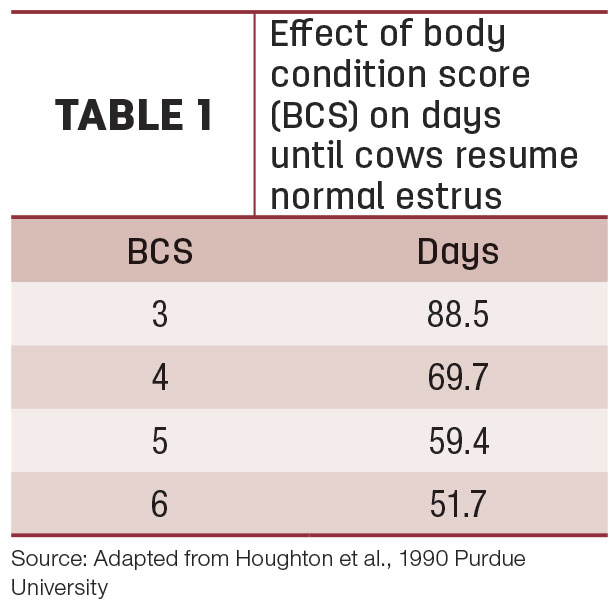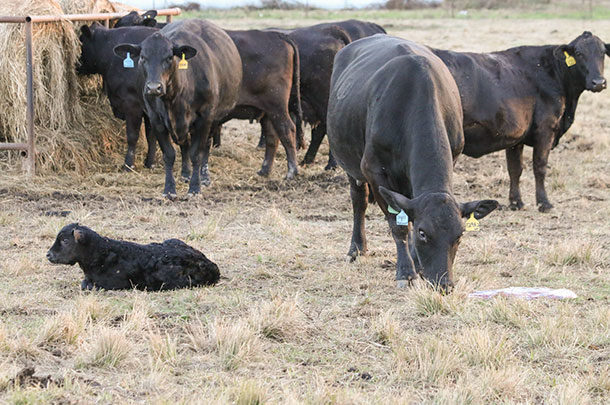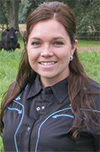Postpartum interval
The postpartum interval is simply the time from calving to conception. The minimization of this time period is critical to maintain an annual calving season. With an average gestation length of 283 days, cows must become pregnant within 83 days of calving to have a calf every year. And while this may seem like plenty of time, when you consider the physiologic train wreck her endocrine system (hormones) and body are in following birth, it is critical that producers do everything right to manage those cows through a successful postpartum interval.

Nutritional prioritization
Once a female conceives, her body will do just about anything it can to maintain that pregnancy. A female’s basic metabolic function is the only thing that is more important than maintaining her pregnancy. However, when a female is in a negative state of energy (weight loss) or on a poor plane of nutrition, her body recognizes that she cannot or does not want to support a pregnancy. Thus reproductive function (not including pregnancy maintenance) will stop. This is why if a cow becomes thin (body condition score [BSC] 4 or less), she will no longer have a normal estrous cycle. From a survival standpoint, this makes perfect sense, and from a management standpoint, this helps make it clear why cows in thin body condition do not breed well.
Body condition at calving
For a thin cow, everything is more important than becoming pregnant, and that is why BCS at calving is a critical indicator of subsequent reproductive performance.
It is well established that body condition at calving is a key indicator to the number of days it will take a cow to cycle following calving. Reproduction is the lowest priority during nutrient partitioning. Thus, cows that are thin at calving simply do not have the body condition (energy reserves) to make reproduction a priority. In addition, following calving, the nutrient requirements of the cow sky rocket due to lactation, making it extremely difficult and expensive to put weight on a cow following calving. This makes body condition at calving an important factor to manage to ensure that cows regain a normal estrous cycle in time to rebreed within the 82-day window. Table 1 shows the impact of body condition at calving on the days until normal estrus is resumed. Research supports that the ideal BCS for cows to calve is a 5 or 6.

Tracking body condition score
While it can seem unpractical to score every cow in a large herd, it is extremely manageable. We know that we must maintain our cow herd at a BCS of 5 or greater to have a successful breed-back following calving. Therefore, by identifying the number of cows in the herd that are below a BCS of 5, producers are able to identify nutritional issues. Body condition scoring can be done on a biweekly basis by simply counting the number of cows in your herd that are a BCS of 4 or less. This will allow you to track the overall BCS of your herd, without taking individual BCS.
For example, every two weeks when you are feeding, count the number of cows that are a BCS of 4 or less. Then use that number to determine the percentage of your herd that is below the ideal BCS of 5. Once you begin to do this, you will also be able to track the overall BCS of your herd from month to month to ensure that they are not slipping nutritionally. This will ensure that BCS is not a limiting factor when it comes time to breed back and allows that cow to produce a marketable calf every 365 days. ![]()

-
Kalyn Waters
- Agricultural Agent
- University of Florida Extension
- Email Kalyn Waters
PHOTO: Body condition is a key indicator to the number of days it will take a cow to cycle following calving. Staff photo.







